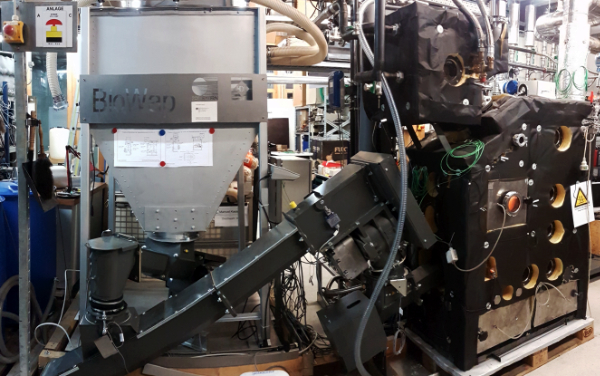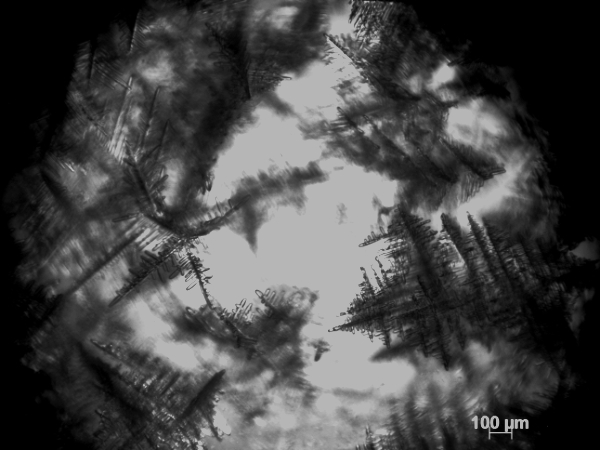The field of heat conversion focuses on the research and development of chillers and heat pumps.
Our research approach ranges from the development and optimisation of individual components to their integration into complex energy systems. Our long-standing expertise on this thematic complex focuses particularly on sorption heat pump and cooling systems (closed absorption, open adsorption), on sorption storage, as well as innovative compression heat pump applications.
Our work focuses on:
Contact:

The BioWap project saw the development of a prototype for a highly efficient absorption heat pump system directly fired with wood pellets at a heating capacity of approx. 90 kWth and a cooling capacity of up to 75 kWth. System efficiency is expected to reach up to 200 %.
The direct coupling of combustion and absorption heat pump (working materials: water and aqueous lithium bromide solution) renders a low-temperature environmental heat source usable. To keep the cost of planning and installation as low as possible, an integral hydraulic and control module was also developed.
The core objective of the project was to develop and demonstrate a working prototype of an absorption heat pump directly fired with wood pellets at a heating capacity of approx. 90 kWth (firing capacity approx. 50 kWth). This was meant to open up a new technology path for low-emission, highly efficient heat provision. The project partner was HDG Bavaria GmbH.
Head of Project: Manuel Kausche, M.Sc., manuel.kausche@zae-bayern.de
Project Duration: 09/2016–08/2020
Website: https://www.energetische-biomassenutzung.de/projekte-partner/details/project/show/Project/BioWap-549

The GALuWap project aims at the development of a (bio)gas-fired, compact absorption heat pump system with a maximum heating capacity of 50 kW. Outside air serves as the environmental heat source, the working medium is an environmentally neutral combination of water and an aqueous lithium bromide solution.
Multi-stage absorption heat pumps can achieve temperature rises of up to 70 K, even at comparatively cold ambient air temperatures down to -10 °C. They are therefore suitable to heat existing buildings and provide domestic hot water at up to 60 °C.
Hence, the demand for heat and domestic hot water in a typical supply situation in Germany can be almost completely covered by heat pump operation. The seasonal thermal efficiency of the system can climb up to 1.3. Compared to gas condensing boilers, this can reduce primary energy consumption by up to 25 %. If cooling and heating are provided simultaneously, e.g. in mixed residential and commercial buildings, the seasonal efficiency can rise to 1.6. Compared to a gas condensing boiler with compression chiller, this means a saving of up to 40 %.
For further cost and volume reduction, plate heat exchangers developed in a previous project are being evaluated for replacement of the shell-and-tube heat exchangers commonly used in heat pumps. Furthermore, an integral hydraulics and control module is being developed to reduce the effort required for planning and installation. The greatest challenges lie in the dependable implementation of the innovative cycle concept, including special precautions for operation below the freezing point of the employed water, as well as in the implementation of the gas-fired expulsion system.
Partners in the project are TRANE-Roggenkamp Klima- und Kältetechnisches Büro GmbH and the CENERGIE research institute for energy-efficient buildings and quarters at Munich's University of Applied Sciences.
Head of Project: Manuel Kausche, M.Sc., manuel.kausche@zae-bayern.de
Project Duration: 12/2019–06/2024